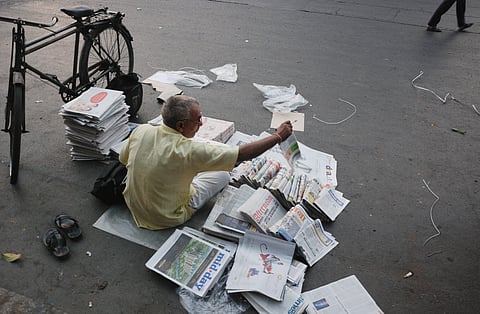In the early 1970s, both editorials and their avid new readers experienced a unique roadblock in the expansion and mutation of the news business. The government, freshly bathed in the glory of the Bangladesh War and the dismembering of Pakistan, decided to add an additional tax of 15 percent on imported newsprint. According to an editorial written by the then editor of Nai Dunia of Indore, the pleadings of various newspaper barons and editors to reduce paper costs to enable them to sell their papers to literate but poor readers fell on deaf ears. It was felt that in the name of the poor, the rich owners and editors wanted to get concessions that would increase their own profit margins. The then finance minister, R. Venkataraman, said that he was a reader of the Chennai-based, popular English daily The Hindu, the Mumbai-based The Times of India and the Delhi-based Hindustan Times. And he saw that all the papers carried a lot of advertising that reduced the space for news considerably, yet were still selling a 16–28 pager at a cost of 60–65 paise. They could certainly afford to pay the extra newsprint cost.
The question arose: What about the vernacular dailies that were read by the poor but had only 6–10 pages with little to no private advertising? No one asked this eminently sensible question. But other questions were posed, nevertheless: Can the government ration newsprint? Or decide the number of pages and/or the correct proportion of advertisements to news in an independent newspaper? If the newspapers are able to raise sufficient advertising from the market to sell their papers for free and still make a profit, will the government allow them to do so?

